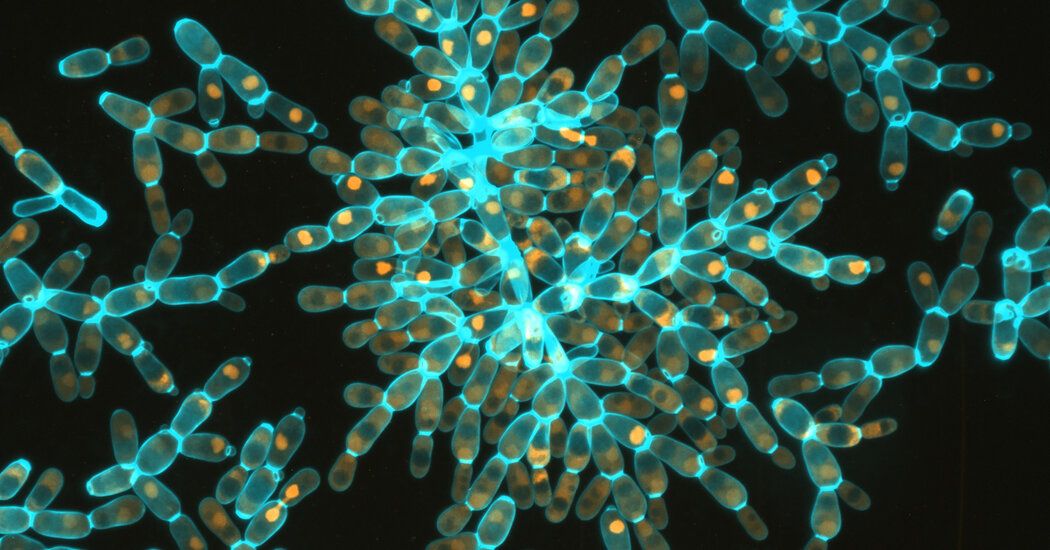An Experiment Repeated 3,000 Times Finds Hints to Evolution’s Secrets
In a lab in Atlanta, thousands of yeast cells fight for their lives every day. The ones that live another day grow fastest, reproduce quickest and form the biggest clumps. For about a decade, the cells have evolved to hang onto one another, forming branching snowflake shapes.
These strange snowflakes are at the heart of experiments exploring what might have happened millions of years ago when single-celled creatures first banded together to become multicellular. That process, however it went down, eventually resulted in unwieldy, fabulously weird organisms like octopuses and ostriches and hamsters and humans.
Although multicellularity is thought to have evolved at least 20 times in the history of life on Earth, it is far from obvious how living things go from a single cell to many that share a fate. But, in a paper published Wednesday in the journal Nature, researchers reveal one clue to how cells could start building themselves into a body. The team that produced the snowflake yeast found that over 3,000 generations, the yeast clumps grew so large that they could be seen with the naked eye. Along the way, they evolved from a soft, squishy substance to something with the toughness of wood.
Will Ratcliff, a professor at Georgia Tech, began the yeast experiments when he was in graduate school. He was inspired by Richard Lenski, a biologist at the University of Michigan, and his colleagues who have grown 12 vials of E. coli through more than 75,000 generations, documenting since 1988 how the populations have changed. Dr. Ratcliff wondered if an evolution study encouraging cells to stick together could shed light on the origins of multicellularity.
Source: The New York Times


